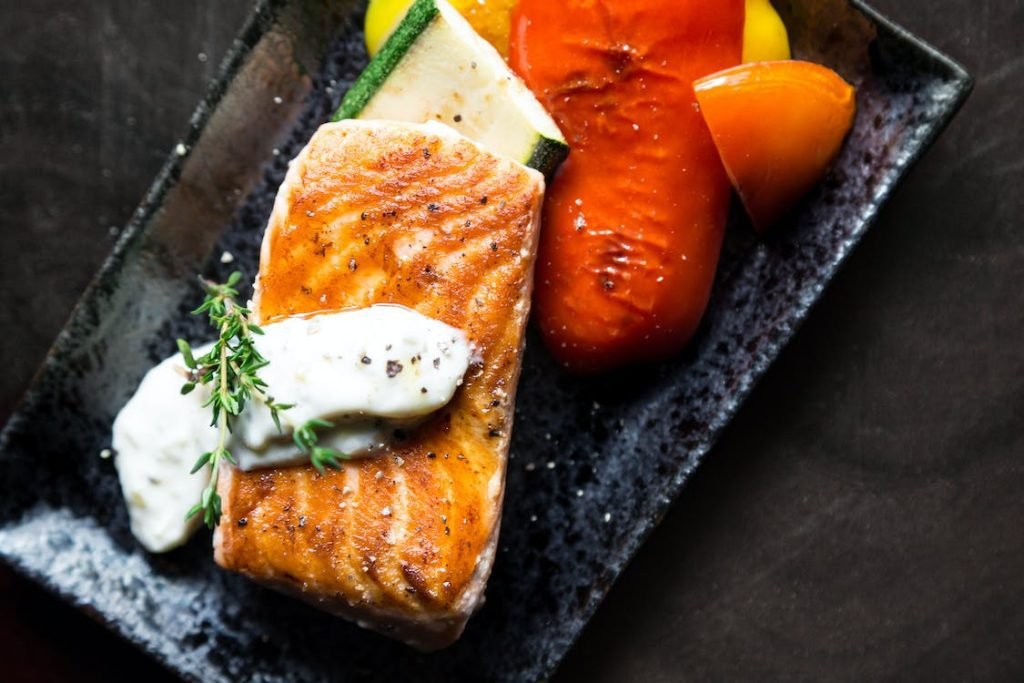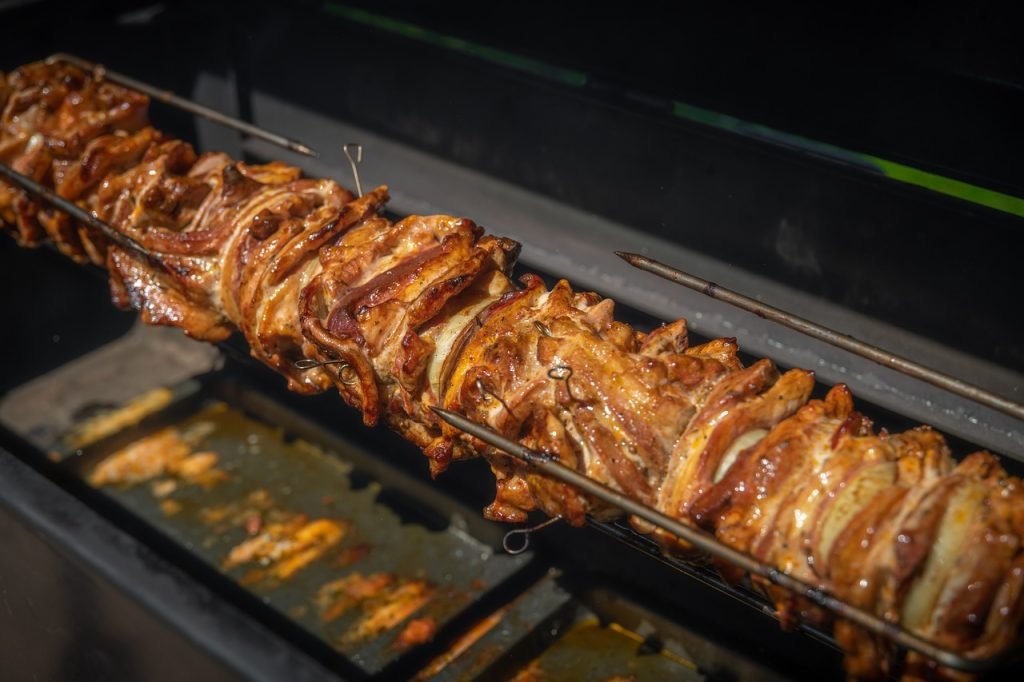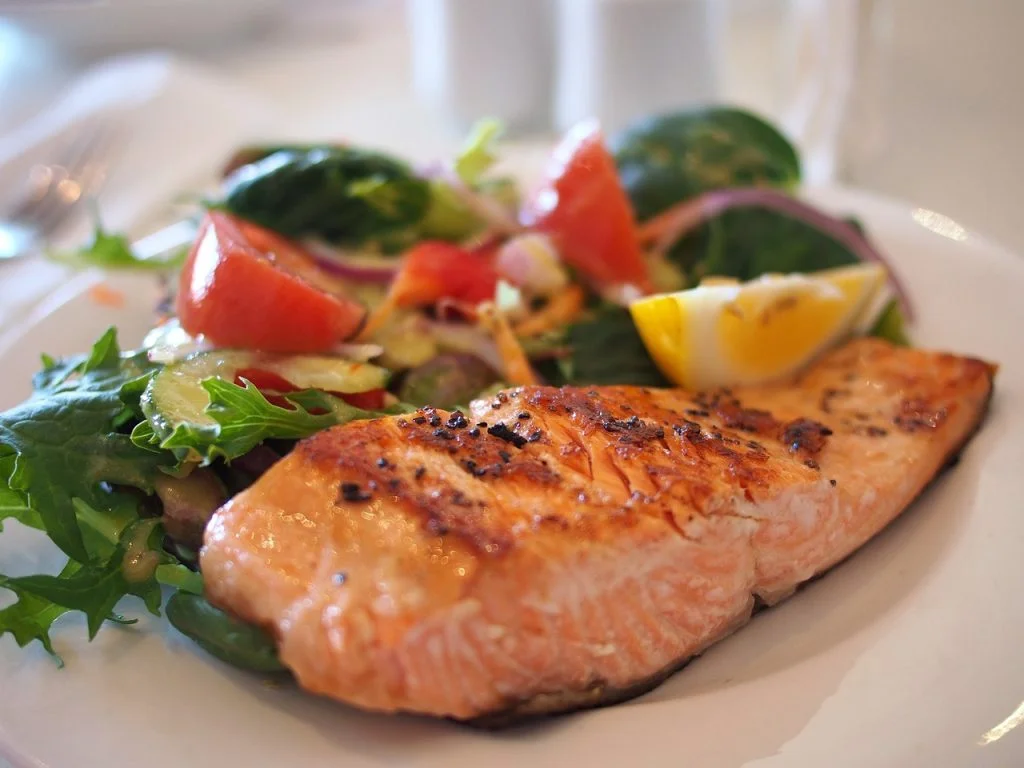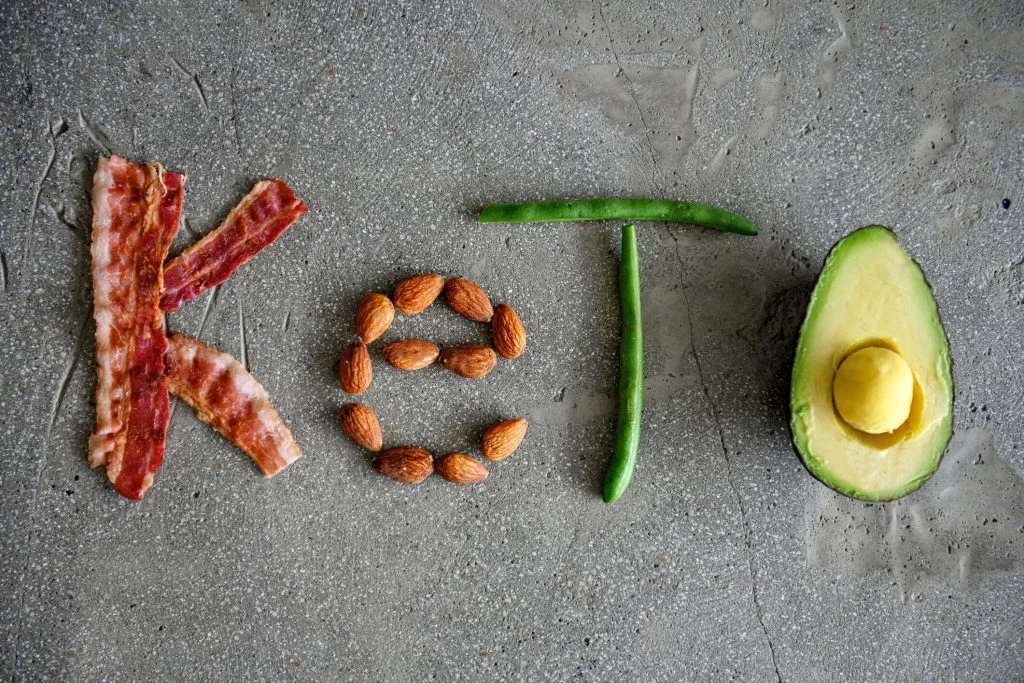My love affair with pizza and pastries came to a screeching halt when a routine blood test revealed precariously high sugar levels. The doctor’s stern words resonated: ‘Change your lifestyle or face the consequences.’
That’s when I stumbled upon the unlikely duo of keto and intermittent fasting. Skeptical at first, I dove into the research, and what I discovered surprised me.
This wasn’t just a fad – it was a science-backed approach to metabolic health, promising not just weight loss, but potential protection against chronic diseases like the one looming over me.
This is my story – a tale of ditching the carb coma and embracing the power duo that changed my life.
Join me as we delve into the fascinating world of keto and IF, explore their science-backed benefits, and equip you with the knowledge to decide if this potent partnership could be the key to unlocking your own health and wellness transformation.
But remember, before we set foot in this exciting realm, a visit to your healthcare professional is always the first step to a successful and sustainable journey.
Part 1. Understanding The Fundamentals

A. Ketogenic Diet: Powering Up on Fat
What is it? Ditch the sugar-powered engine and switch gears with the ketogenic diet, a metabolic makeover that flips the script on how your body fuels itself.
Instead of relying on glucose (carbs), your body shifts to burning ketones, molecules produced from fat in your liver.
Imagine it as swapping out the high-octane gasoline for a smooth-burning biofuel – ketones provide sustainable energy while helping you shed excess fat.
Macronutrient Magic: Forget counting calories, focus on ratios! In keto, your plate transforms into a fat fiesta, accounting for roughly 70-80% of your daily calories.
Protein takes up the supporting role, filling 20-25% of your plate, while carbs become the minimalist guest, hovering around 5-10%. Think creamy avocados, fatty cuts of meat, and nut-infused salads – a delicious journey into the world of healthy fats.
Feast on the “Yes” List:
Let your inner gourmand guide you with a bounty of keto-friendly options:
- Protein Powerhouse: Feast on meat, poultry, fish, and eggs – choose fatty cuts like salmon, ribeye, and chicken thighs for extra keto fuel.
- Dairy Delights: Enjoy full-fat cheese, unsweetened yogurt, and heavy cream – a sprinkle of parmesan on your broccoli or a dollop of whipped cream on your berries adds richness without spiking your carbs.
- Vegetable Symphony: Embrace leafy greens like spinach and kale, low-carb staples like broccoli and cauliflower, and fiber-rich options like zucchini and asparagus.
- Nutty Goodness: Almonds, macadamia nuts, and pecans become your healthy snacking heroes – just keep portions mindful, as nuts pack a caloric punch.
- Fat Masters: Olive oil, avocado oil, and coconut oil become your culinary companions – drizzle them over salads, cook your eggs in them, or blend them into creamy sauces.
Carb Restrictions: Finding Your Keto Fit:
Not all ketos are created equal! Explore different levels to find your perfect fit:
- Standard Keto: The OG keto, with a strict 50-75 gram daily carb limit – ideal for those seeking rapid weight loss and deeper ketosis.
- Cyclical Keto: Alternate periods of strict keto with higher-carb phases, perfect for athletes or those seeking more flexibility.
- Targeted Keto: Allow additional carbs around workouts to fuel your exercise – ideal for active individuals who want the benefits of keto without compromising performance.
Benefits Beyond the Scale: Keto isn’t just about dropping pounds, it’s about rewiring your health:
- Blood Sugar Stability: Say goodbye to sugar spikes and crashes! Keto can improve insulin sensitivity and regulate blood sugar levels, beneficial for diabetics and pre-diabetics.
- Inflammation Fighter: Keto’s anti-inflammatory properties can benefit conditions like arthritis and autoimmune diseases.
- Brain Booster: Ketones offer alternative fuel for your brain, potentially improving cognitive function and memory.
- Chronic Disease Shield: Research suggests keto may reduce the risk of certain cancers, Alzheimer’s, and heart disease.
Challenges and Side Effects: Buckle Up for the Keto Flu: Remember, your body is adjusting to a new fuel source! In the initial weeks, you might experience the “keto flu”: fatigue, headaches, and brain fog.
These are temporary signs of your body adapting, and hydration, electrolytes, and gentle movement can help ease the transition. Don’t worry, most keto warriors emerge victorious after this initial hurdle!
Constipation and Kidney Stones: While uncommon, some may experience constipation or an increased risk of kidney stones.
Stay hydrated, eat fiber-rich vegetables, and consult your doctor if any concerns arise. Remember, individual needs vary, and personalized guidance from a healthcare professional is crucial before embarking on any dietary change.
This is just a taste of the keto revolution! Stay tuned, where we’ll unlock the secrets of intermittent fasting and explore how these two powerful tools can work together to transform your health and unlock your ultimate energy potential.

B. Intermittent Fasting: Dancing with Time for Health
What is it? Imagine hitting the pause button on your eating window – that’s what intermittent fasting (IF) is all about! It cycles between periods of eating and fasting, not dictating what you eat, but when you eat.
Think of it as giving your body a break from constantly processing food, allowing it to focus on other crucial functions like cellular repair and metabolic housekeeping.
Popular schedules include:
- 16:8: This “time warrior” divides your day into 16 fasting hours and 8 eating hours. Ideal for beginners, it allows for two or three substantial meals within your window.
- 5:2: Embrace variety with this “weekday warrior” approach. Eat normally for five days and restrict calories (500-600) on two non-consecutive days.
- Eat Stop Eat: Feeling adventurous? This schedule involves 24-hour fasts once or twice a week, interspersed with normal eating days.
How it works: Behind the simplicity of IF lies a fascinating physiological symphony. During fasting periods, your body dips into stored fat for energy, triggering a cellular “clean-up” process called autophagy.
Imagine tiny Pac-Mans gobbling up damaged cells, promoting cellular repair and regeneration.
Additionally, IF improves your body’s ability to switch between burning glucose and ketones (fat) for energy, a state known as metabolic flexibility, leading to more efficient fuel utilization.
Benefits Beyond the Scale: IF isn’t just about shrinking your waistline, it’s about expanding your health potential:
- Weight Loss: Burn fat more efficiently, reduce overall calorie intake, and experience a natural decrease in hunger cravings, all contributing to healthy weight management.
- Insulin Sensitivity Boost: Lower your risk of diabetes and improve blood sugar control by enhancing your body’s ability to respond to insulin effectively.
- Cellular Repair Powerhouse: Autophagy triggered by fasting promotes cellular renewal, potentially reducing the risk of chronic diseases like Alzheimer’s and cancer.
- Brainpower Upgrade: Studies suggest IF can improve cognitive function, memory, and focus, leading to sharper mental performance.
Considerations and Safety:
Remember, IF isn’t a one-size-fits-all approach. Be mindful of:
- Individual Needs: Pregnant or breastfeeding women, children, individuals with certain medical conditions, and those taking specific medications should consult their doctor before starting IF.
- Listening to Your Body: Don’t push yourself too hard. Stay hydrated, listen to your hunger cues, and adjust your schedule if you experience any negative effects.
- Not a Magic Bullet: Combine IF with a healthy diet and exercise for optimal results. Don’t rely solely on fasting for sustainable weight loss and improved health.
Intermittent fasting can be a powerful tool for optimizing your health and well-being, but it’s crucial to approach it consciously and with self-compassion.
Next, we’ll explore how keto and IF can be combined for a potentially synergistic effect, unlocking a new level of metabolic and health transformation.

Part 2: Combining Keto and Fasting: A Match Made in Metabolic Heaven
Now that we’ve explored the magic of both keto and IF individually, let’s look at what happens when they are combined! Prepare for a synergistic dance of fat-burning and health optimization.
Synergy of the Superstars: Imagine keto as the fat-busting engine and IF as the metabolic coach. Keto fuels your body with ketones, while IF pushes it to use those ketones even more efficiently. This double whammy leads to:
- Deeper Ketosis: IF extends your fasting window, allowing your body to deplete glucose stores faster, leading to deeper ketosis and potentially accelerated fat burning.
- Increased Insulin Sensitivity: Both keto and IF improve insulin sensitivity, making your body even more efficient at utilizing ketones for energy, further amplifying fat loss.
- Cellular Reboot: The combined effect of autophagy from IF and ketone production from keto triggers a powerful cellular cleanup, potentially reducing inflammation and promoting overall health.
- Improved Metabolic Flexibility: This dynamic duo enhances your body’s ability to switch between glucose and ketones for fuel, leading to better energy regulation and increased resilience to metabolic stress.
Fast-Tracking Fat Burning: With IF extending your fasting window, your body delves deeper into fat reserves for fuel. This can translate to increased fat loss, especially for those looking to break through plateaus on either keto or IF alone. Remember, individual results vary, and consistency with both approaches is key.
Meal Timing Strategies: Navigating your eating window within the keto framework might seem tricky, but it’s all about planning! Here are some tips:
- Feasting Windows: If you’re on a 16:8 schedule, consider front-loading your meals within the 8-hour window to ensure adequate protein and fat intake. Prioritize keto-friendly options and avoid carb-heavy snacks.
- Fasting Periods: Stay hydrated and consider supplementing with electrolytes, especially during longer fasts. Bone broth, herbal teas, and black coffee can be your allies.
- Listen to Your Body: Don’t force yourself to fit into a specific schedule. Adjust your IF window based on your hunger cues and energy levels.
Conquering the Challenges: Combining keto and IF isn’t all sunshine and rainbows. Here are some potential hurdles and how to overcome them:
- Hunger Management: Initial hunger pangs are common. Stay hydrated, break your fast with smaller meals, and prioritize satiating fats and protein to keep hunger at bay.
- Electrolyte Imbalance: Fatigue, headaches, and muscle cramps can indicate electrolyte imbalance. Supplement with electrolytes, consume bone broth, and consult your doctor if symptoms persist.
- Meal Planning Fatigue: Planning keto-friendly meals within your IF window can seem daunting. Utilize online resources, meal prep in advance, and focus on simple, delicious options.
Remember, combining keto and IF is a journey, not a destination. Be patient, listen to your body, and adjust your approach as needed.
Don’t hesitate to seek professional guidance from a healthcare professional or nutritionist, especially if you have any underlying health conditions.
Now, we’ll delve into practical meal plans for different IF schedules within the keto framework, empowering you to put this powerful duo into action for a life transformed. Grab your healthy fats and fasting schedule, and prepare to take your health to the next level!

Part 3: Keto-Friendly Intermittent Fasting Meal Plans – Fueling Your Day with Fat and Fasting
A. 16:8 Schedule: Burn While You Sleep, Feast Like a Boss
With the theoretical base covered, let’s dive into the delicious realm of practical meal plans that combine the power of keto and IF within a 16:8 eating window.
Remember, customization is key! Adapt these suggestions to your preferences and adjust portions based on your individual needs.
Morning Feast (within your 8-hour window):
- Scrambled Eggs on Cloud Nine: Whisk whisked eggs with shredded cheese, cream cheese, or pesto for a creamy, protein-packed start. Add chopped spinach, avocado, or sun-dried tomatoes for variety.
- Breakfast Salad Supreme: Ditch the sugar-laden cereals and embrace a keto-friendly salad. Layer leafy greens with grilled chicken, smoked salmon, or hard-boiled eggs. Drizzle with a homemade vinaigrette using olive oil, lemon juice, and Dijon mustard.
- Bulletproof Coffee Smoothie: Blend strong coffee with high-quality grass-fed butter, MCT oil, and unsweetened protein powder for a creamy, energy-boosting concoction. Add a pinch of cinnamon or cocoa powder for extra flavor.
- Keto Chaffle Bliss: Ditch the bread, embrace the chaffle! Make a savory waffle using almond flour, cheese, eggs, and baking powder. Top it with avocado and smoked salmon or scrambled eggs.
Lunchtime Delights:
- Keto Bowl Powerhouse: Choose a base like romaine lettuce or cauliflower rice. Load it up with grilled chicken, shrimp, or roasted vegetables. Drizzle with a tahini sauce (made with lemon juice, tahini, and water) or a flavorful pesto.
- Zucchini Noodle Carbonara: Spiralize zucchini for a low-carb pasta alternative. Toss it with pancetta or crispy bacon, creamy parmesan sauce, and your favorite chopped herbs.
- Keto Buddha Bowl: Combine roasted sweet potatoes (in moderation), grilled tofu, chopped nuts and seeds, and a dollop of unsweetened Greek yogurt for a colorful and nourishing lunch.
- Soup’s On: Opt for homemade keto-friendly soups like creamy broccoli cheese, chunky chicken chili, or vegetable minestrone. Pair it with a side salad for added fiber.
Dinnertime Adventures:
- Salmon with Lemon Butter Sauce: Bake or pan-sear salmon and top it with a simple lemon butter sauce made with butter, fresh herbs, and a squeeze of lemon juice. Serve with roasted asparagus or Brussels sprouts.
- Steak Night Under the Stars: Grill a juicy ribeye steak and pair it with sautéed mushrooms, caramelized onions, and a side of cauliflower rice. For a decadent touch, top your steak with a pat of herb-infused butter.
- Frittata Fiesta: Whisk together eggs, chopped vegetables like bell peppers, zucchini, and onions, your favorite cheese, and bake for a satisfying and versatile dish. Enjoy it for dinner or even pack it for lunch the next day.
- Chicken Stir-Fry Extravaganza: Stir-fry strips of chicken or tofu with various vegetables like broccoli, snow peas, and peppers in a homemade sesame ginger sauce. Serve over cauliflower rice or zucchini noodles for a flavorful and low-carb meal.
Snacking Smart:
- Mindful Munchies: Keep hunger at bay with healthy snacks like a handful of almonds or macadamia nuts, sliced bell peppers with guacamole, celery sticks with cream cheese, or pork rinds dipped in salsa.
- Fat Bombs to the Rescue: These bite-sized keto treats loaded with healthy fats can curb cravings. Experiment with recipes using coconut oil, nut butter, cacao powder, and stevia for a guilt-free treat.
- Bone Broth Boost: Sip on warm bone broth for a hydrating and mineral-rich snack. Add a squeeze of lemon juice or fresh herbs for extra flavor.
Hydration and Supplementation:
- H2O is Your Hero: Aim for eight glasses of water throughout the day to stay hydrated and support optimal body function. Add a pinch of sea salt or slices of cucumber or lemon for added flavor.
- Electrolyte Balance: Consider supplementing with electrolytes, especially during longer fasts or if you experience fatigue or muscle cramps. Look for electrolyte powders or capsules formulated for keto and IF.
- Listen to Your Body: Consult your doctor before starting any supplement regimen, especially if you have any health conditions or take medications.
Remember, these are just a starting point. Explore, experiment, and find what works best for you.
Celebrate your successes, listen to your body, and embrace the journey of transforming your health with delicious keto-friendly meals within your IF window.
Now, we’ll explore other popular IF schedules and offer meal plan suggestions adapted to each, equipping you with the knowledge and inspiration to make keto and fasting your personalized path to health and well-being.

B. 5:2 Schedule: Feast and Fast for Sustainable Success
Let’s switch gears with the 5:2 schedule, where five days are dedicated to regular (but keto-friendly) eating, and two become low-carb light shows. This flexibility makes it ideal for those seeking a less restrictive approach while still reaping the benefits of intermittent fasting.
Non-Fasting Days: Feasting with Balance:
On your five normal eating days, focus on nutrient-rich keto staples while listening to your body’s hunger cues. Here are some meal ideas:
- Breakfast: Start your day with protein and healthy fats. Try scrambled eggs with smoked salmon and avocado, keto smoothie with berries and spinach, or chia pudding with coconut milk and nuts.
- Lunch: Keep it satisfying with grilled chicken salad with pesto, tuna salad with celery sticks, or a keto stir-fry with cauliflower rice and your favorite veggies.
- Dinner: Enjoy delicious dinners like baked salmon with roasted asparagus, steak with creamy cauliflower mash, or vegetarian shepherd’s pie with ground lamb and cauliflower “gratin.”
- Snacks: Opt for healthy options like handfuls of nuts and seeds, sliced vegetables with hummus, or homemade keto fat bombs.
Fasting Days: Navigating the Calorie Countdown:
On your two “light days,” aim for 500-600 calories per day. Keep in mind that individual needs vary, and it’s crucial to consult your doctor before embarking on any drastic calorie restriction. Here are some tips for successful fasting:
- Hydration is King: Drink plenty of water and unsweetened herbal teas throughout the day to stay hydrated and support essential bodily functions.
- Electrolyte Imbalance Warriors: Consider supplementing with electrolytes to avoid fatigue, muscle cramps, and headaches, especially during longer fasts.
- Hunger Hacks: Keep yourself occupied with activities you enjoy. Gentle movement like walking or yoga can also help distract from hunger pangs.
- Bone Broth Buddy: Sipping warm bone broth can provide essential minerals and electrolytes while keeping you feeling full.
Refeeding Wisdom: After a fast, it’s essential to reintroduce food gradually to avoid digestive discomfort. Follow these tips:
- Start Slow: Begin with light, easily digestible foods like broth, yogurt, or boiled vegetables.
- Prioritize Protein: Choose protein-rich options like grilled chicken or fish to support muscle recovery.
- Listen to Your Gut: Pay attention to your body’s signals and avoid overeating, even if you’re feeling extra hungry.
Remember, the 5:2 schedule requires practice and self-compassion. Experiment, listen to your body, and adjust your approach to find what works best for you. In the next section, we’ll explore the 24-hour fasts of the Eat Stop Eat schedule and uncover the keto-friendly feasts that can fuel your refeeding window for optimal results. Stay tuned!

C. Eat Stop Eat: Embracing the Power of the 24-Hour Fast
Brace yourself for the ultimate test of metabolic flexibility with Eat Stop Eat, a schedule where two non-consecutive days involve 24-hour fasts punctuated by five days of normal eating. This approach might sound intense, but the keto-fasting combo can create a potent metabolic cocktail for fat loss and overall health optimization.
Weekly Eating Window: Structuring your Feasting Fiesta:
With two 24-hour fasts per week, you’re left with five “feasting days.” Plan your schedule strategically to ensure adequate nutrient intake and satiety:
- Pre-Fast Feast: Prior to your 24-hour fast, choose a satisfying keto meal around four hours before the window closes. Think protein-rich options like roasted chicken with vegetables, fatty fish with leafy greens, or a creamy cauliflower-based soup.
- Feasting Days: On your five normal eating days, follow the same principles as with the 5:2 schedule – focus on nutrient-dense keto staples, listen to your hunger cues, and prioritize protein and healthy fats.
- Post-Fast Feast: Gently break your fast with a light, easily digestible meal like broth or yogurt. Follow it with a protein-rich meal a few hours later, gradually increasing portion sizes throughout the day to avoid digestive discomfort.
Fueling Your Pre- and Post-Fast Meals:
Choosing the right foods for your pre- and post-fast meals is crucial for optimizing the experience:
Pre-Fast Feast:
- Protein Power: Prioritize meals rich in protein like roasted chicken with grilled vegetables, salmon with asparagus, or a beef and broccoli stir-fry. Protein helps prevent muscle breakdown during the fast and keeps you feeling satiated.
- Healthy Fats FTW: Don’t shy away from healthy fats like olive oil, avocado, or nuts and seeds. They provide sustained energy and support satiety throughout the fast.
- Carb Caution: Keep carbs minimal, opting for low-glycemic options like leafy greens, broccoli, or cauliflower. High-carb meals can trigger insulin spikes and disrupt the fasting process.
Post-Fast Feast:
- Gentle Start: Begin with easily digestible options like bone broth, unsweetened yogurt, or cucumber with hummus. Give your digestive system time to adjust after the fast.
- Protein-First Focus: Gradually reintroduce protein with meals like grilled chicken or fish with roasted vegetables, or a tofu scramble with avocado. Protein aids in muscle recovery and promotes satiety.
- Hydration Hero: Stay hydrated throughout your refeeding window. Water, unsweetened teas, and bone broth are excellent choices.
Mindful Eating Matters:
Eating mindfully during your feasting days is essential to prevent overeating after a fast:
- Slow Down and Savor: Take your time, chew thoroughly, and focus on the taste and texture of your food. This helps with digestion and promotes satiety.
- Listen to Your Body: Pay attention to your hunger and fullness cues. Stop eating when you’re comfortably full, not stuffed.
- No Emotional Eating: Avoid using food to cope with stress or emotions. Choose mindful activities to address negative feelings outside of the kitchen.
Remember, Eat Stop Eat requires careful planning and self-awareness. Start slowly, adapt the schedule to your needs, and prioritize mindful eating practices.
In the concluding section, we’ll wrap up this journey through keto and intermittent fasting, leaving you equipped with the knowledge and resources to confidently embark on your personalized path to health and well-being.

Embracing the Synergy: A Keto-IF Conclusion
We’ve journeyed through the exciting world of combining keto and intermittent fasting, revealing their synergistic potential for optimizing health and achieving your fat-loss goals. Let’s recap the key takeaways:
- Metabolic Match Made in Heaven: Keto fuels your body with ketones, and IF enhances your ability to use them efficiently, leading to deeper ketosis and potentially faster fat loss.
- Double Whammy for Health: Beyond the scale, this duo can improve insulin sensitivity, boost cellular repair, enhance cognitive function, and offer protection against chronic diseases.
- Finding Your Fasting Flavor: Explore different IF schedules like 16:8, 5:2, and Eat Stop Eat to find the one that fits your lifestyle and preferences.
- Feasting with Wisdom: Prioritize protein, healthy fats, and low-carb vegetables during your eating window, and be mindful of portion sizes, especially after longer fasts.
- Listen to Your Body: Above all, this journey is about understanding and honoring your unique needs. Experiment, tweak the approach, and adjust your course as needed.
Remember, there’s no one-size-fits-all recipe for success. Embrace the experimentation, celebrate your journey, and always listen to your body’s wisdom. Here are some reliable resources to fuel your further exploration:
Websites:
- Diet Doctor: https://www.dietdoctor.com/low-carb/doctors
- Mark’s Daily Apple: https://mealpreponfleek.com/meet-mark-sisson-marks-daily-apple-primal-blueprint/
- The Fasting Guide: https://afdclinics.com/wp-content/uploads/2018/08/The-Complete-Guide-to-Fasting-by-Jason-Fung-MD.pdf
- National Institutes of Health: https://www.niddk.nih.gov/health-information/weight-management/adult-overweight-obesity
Books:
- The Ketogenic Diet: Lyle McDonald
- The Obesity Code: Dr. Jason Fung
- Eat Stop Eat: Brad Pilon
- The Complete Guide to Fasting: Jimmy Moore
Communities:
- Reddit Keto: https://www.reddit.com/r/keto/
- Reddit Intermittent Fasting: https://www.reddit.com/r/whatif/

